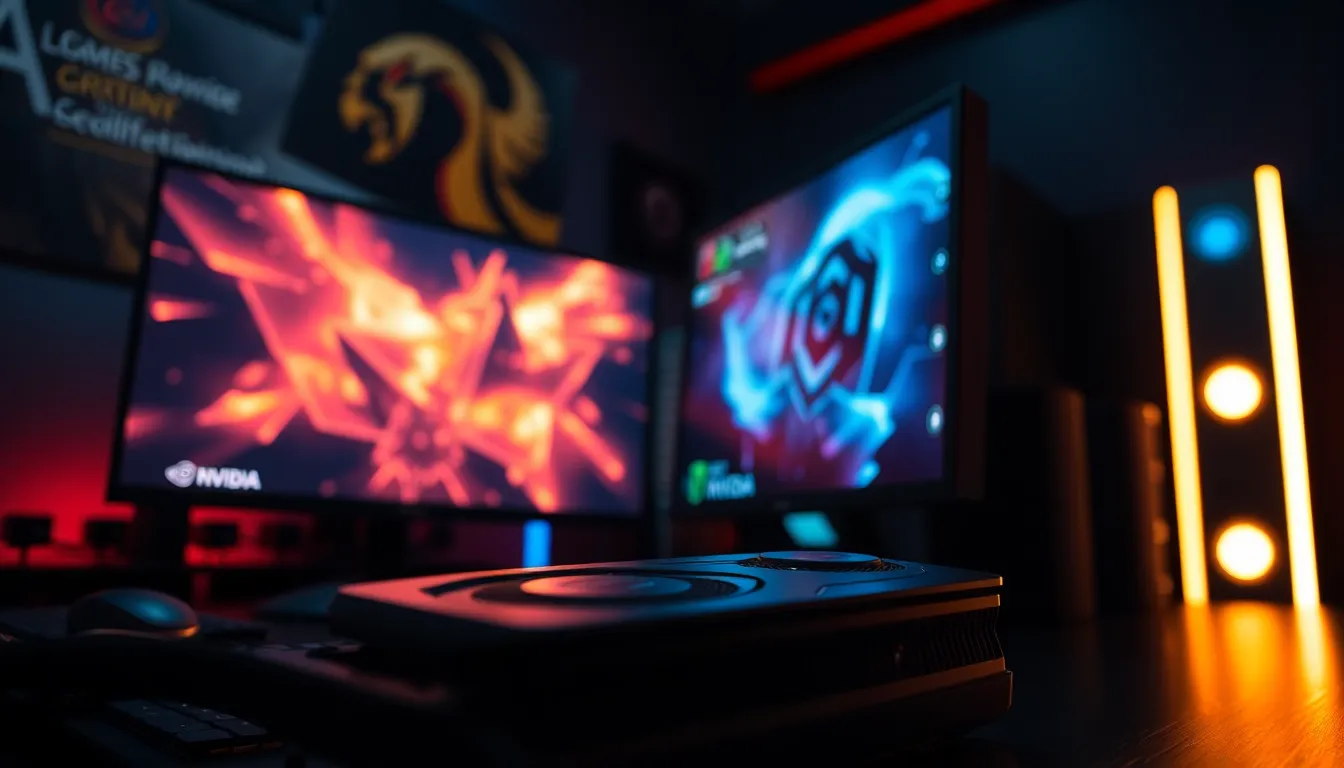Every month, gamers around the globe eagerly await the results of the Steam Hardware Survey. This isn’t just a bunch of numbers; it’s the ultimate gossip column for the gaming community, revealing what hardware the cool kids are using. Spoiler alert: if you’re still rocking that ancient graphics card, you might want to consider an upgrade before your computer becomes a relic of the past.
Table of Contents
ToggleOverview of Steam Hardware Survey
The Steam Hardware Survey offers invaluable insights into the hardware preferences of gamers. By collecting data directly from users, it reveals trends related to graphics cards, CPU models, and operating systems. This monthly survey captures the gaming community’s evolving technology landscape, helping developers and manufacturers understand gamer needs.
A wide range of hardware components features in the survey data. For instance, the popularity of specific graphics cards often reflects advancements in gaming performance. Additionally, trends in CPU usage highlight the demand for processing power in contemporary games. This continuous stream of data aids developers in tailoring games to suit the majority’s hardware capabilities.
Steam’s survey also covers the operating systems used by gamers. Windows, for example, consistently shows dominance among users. Linux and macOS maintain smaller shares, but their presence indicates growing diversification within the gaming platform ecosystem. Tracking these operating systems informs developers about potential adjustments in compatibility and user experience.
Incorporating findings from the Steam Hardware Survey can drive hardware innovation. Manufacturers rely on this data to understand the specifications most gamers prefer, guiding the design and development of future components. As technologies advance, consistent engagement with the survey results allows for informed decision-making within the gaming industry.
Overall, staying informed through the Steam Hardware Survey equips gamers and developers alike to navigate the shifting landscape of gaming technology. Regular updates reveal the tools necessary for gamers to maximize their gaming experience, keeping them aligned with the latest trends and enhancements.
Key Findings from the Latest Survey

The latest Steam Hardware Survey reveals significant hardware trends in the gaming community. Insights from this data showcase various preferences among gamers.
Processor Usage Statistics
Intel processors dominate the landscape, capturing nearly 70% of user preferences. AMD processors continue to gain traction, accounting for around 30% of usage. Popular models like Intel Core i7 and AMD Ryzen 5 lead the chart, signifying gamer reliance on powerful processing capabilities. Multi-core performance seems essential, especially for demanding applications and newer game titles. The survey indicates that most users favor 6-core processors or higher, reflecting the industry’s shift towards more demanding software requirements.
Graphics Card Preferences
NVIDIA graphics cards hold a substantial market share, surrounded by significant support from users opting for AMD. The NVIDIA GeForce RTX 3060 and RTX 3080 frequently appear at the top of users’ choices, highlighting their popularity for high-performance gaming. AMD’s Radeon RX 6700 XT follows closely, appealing to budget-conscious gamers seeking quality performance. Trends indicate a growing interest in ray tracing technology, which enhances visual fidelity in supported games. This shift underscores gamers’ desire for immersive experiences, aligning hardware preferences with advancements in gaming graphics.
Trends Over the Years
The Steam Hardware Survey captures evolving trends in gaming hardware over time, illustrating advancements and shifts in player preferences.
Rise of New Technologies
New technologies consistently emerge, shaping gamers’ experiences. Gamers increasingly adopt ray tracing, which enhances visual fidelity and immersion in gaming environments. The shift towards 6-core processors and above reflects a demand for more processing power. Intel and AMD continually innovate, leading to popular models like the Intel Core i7 and AMD Ryzen 5. Additionally, NVIDIA’s GeForce RTX series demonstrates significant market appeal, driven by performance in both mainstream and high-end gaming. The survey data indicates that these trends significantly influence how developers design games and hardware components.
Shifts in Player Demographics
Player demographics have evolved as more individuals engage in gaming. The survey reveals diversification among gamers, with increased interest from various age groups and backgrounds. Data shows that younger players prefer advanced graphics cards, while older demographics tend toward stable, lower-cost options. The expansion of gaming beyond traditional platforms fosters a broader audience. Consequently, manufacturers adapt their strategies to cater to this growing and diverse market. Understanding these demographic shifts is crucial for developers seeking to maximize their reach and impact.
Implications for Game Developers
Understanding the findings of the Steam Hardware Survey significantly influences game development strategies. Game developers can optimize their projects based on current hardware trends.
Hardware Compatibility Considerations
Compatibility with prevalent hardware proves essential for successful game launches. Nearly 70% of gamers utilize Intel processors, which indicates a need to prioritize optimization for Intel architectures. While AMD garners around 30% of user preferences, game developers should ensure their titles perform adequately on both brands. Developers must recognize the widespread use of 6-core processors or higher, focusing on code efficiency to harness available capabilities. Acknowledging varying graphics card preferences, especially the popularity of NVIDIA’s GeForce RTX series, allows developers to enhance visual performance and meet user expectations.
Targeting Game Performance
Focusing on game performance requires close attention to hardware trends. The demand for powerful processing, reflected in player preferences for Intel Core i7 and AMD Ryzen 5, suggests the need for games that leverage superior CPU performance. Developers should consider the gaming community’s interest in ray tracing technology and its enhancement of visual fidelity. Streamlining game performance across different operating systems, including Windows which dominates at over 90%, remains crucial. Developing titles that minimize lag on diverse setups ensures broad accessibility and satisfaction among players.
The Steam Hardware Survey serves as a vital resource for both gamers and developers. By revealing current hardware preferences and trends, it highlights the ongoing evolution of gaming technology. As players adapt to new advancements like ray tracing and powerful CPUs, staying informed through these surveys becomes essential.
Developers can leverage this data to create optimized experiences that cater to the needs of a diverse gaming audience. Understanding the market dynamics ensures that both hardware manufacturers and game creators remain competitive in an ever-changing landscape. The insights gained from the survey not only reflect gamer preferences but also shape the future of gaming itself.



